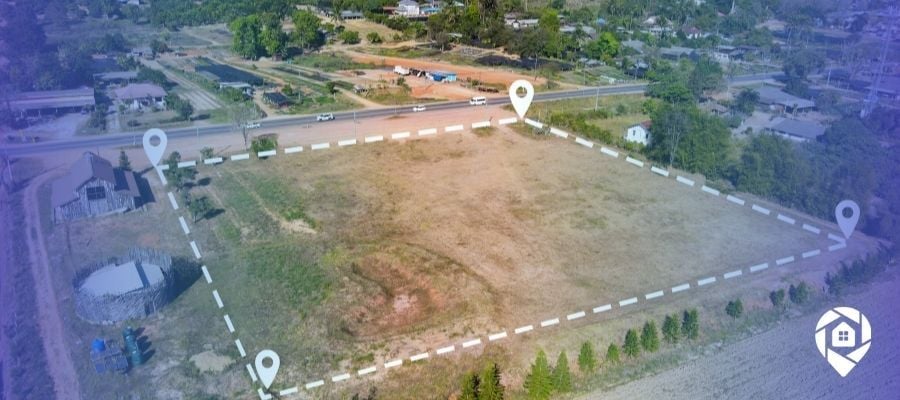
Real Estate Investment Exit Strategies for Every Market

Real estate investing is about more than just buying low and selling high. The real difference between an investor who struggles and one who thrives often comes down to real estate investment exit strategies.
The best investors don’t lock themselves into just one plan. They prepare multiple ways to make money depending on how the market shifts.
Two investors proving this approach works are James Rippeon and Patrick McGrath, co-hosts of the Real FI Podcast. In just a few years, they built a multi-million-dollar portfolio using flexible financing strategies that many beginners overlook.
They’ve acquired 35 rental units worth more than $5 million by staying adaptable. Their story shows why having more than one exit strategy matters, especially in today’s higher interest rate environment.
Why Exit Strategies Matter
An exit strategy is simply your plan for how you’ll profit from a deal. For one property, this could mean wholesaling the contract, fixing and flipping, renting it out, or using seller financing.
Markets rarely stay the same for long. Interest rates rise and fall, lending rules tighten, and buyer demand can shift quickly. If you only have one way to make money, you may end up stuck when conditions change. Investors who prepare multiple strategies can keep moving forward and continue building wealth.
Rippeon and McGrath prove this point. While many investors have paused due to higher borrowing costs, they keep buying by using creative options like seller financing.
Seller Financing: A Powerful Exit Strategy
Seller financing allows an investor to work directly with the property owner instead of a bank. This often leads to better terms than traditional loans. McGrath explained:
“The last two deals I got were four percent interest, amortized over 30 years with five-year balloons. A commercial loan won’t give you 30-year amortization or four percent interest, and you’ll still have a five-year balloon anyway.”
Seller financing can help investors:
- Reduce the amount of upfront cash needed
- Secure lower interest rates than banks currently offer
- Build stronger relationships with sellers
In today’s climate of expensive lending, seller financing can be the difference between a deal working or falling apart.
Finding the Right Sellers
Not every seller will agree to finance a deal. The best candidates are those with strong incentives, such as:
- Owners with little or no mortgage left
- Sellers facing a large tax bill if they sell outright
- Older landlords who want to retire from managing properties
- Owners of under-rented or under-maintained properties
These sellers may prefer steady monthly payments rather than one lump sum. By showing them how seller financing helps meet their goals, investors can secure deals others would pass on.
Building trust takes time. McGrath notes that most of his off-market deals take more than a year from first conversation to closing. Patience is often as important as the numbers.
Getting Past Fear and Taking Action
A common problem for new investors is “analysis paralysis.” They research endlessly but never take action. Rippeon and McGrath remind beginners that no deal will be perfect. Something will always break, whether it’s a roof, an HVAC system, or a water heater.
The key is to focus on buying cash-flowing properties and learning to solve problems as they come up. Taking action on your first deal gives you real experience and confidence to handle the next one.
The Value of a Support Network
No investor succeeds alone. Rippeon and McGrath credit their peer group and mentors as major reasons for their growth.
Rippeon suggests joining or creating a mastermind group that:
- Meets regularly
- Holds each member accountable for taking action
- Reviews real numbers and gives honest feedback
Local meetups are another valuable tool. Sharing your deals with other investors and asking, “Would you buy this?” can help you avoid costly mistakes.
Why Self-Management Builds Stronger Investors
Many beginners think they need a property manager right away. McGrath and Rippeon argue that managing your own properties in the beginning saves money and teaches you valuable lessons.
McGrath explained:
“We have 35 units. If I hired a property management company, it would cost between $5,000–$6,000 per month. I’m not getting $5,000–$6,000 worth of headaches every month. It’s really not that hard.”
Benefits of self-management include:
- Learning what makes a good tenant
- Keeping more of your rental income
- Understanding the day-to-day realities of the business
While it might not be a forever strategy, starting with self-management helps you become a more informed investor.
Four Real Estate Investment Exit Strategies Every Investor Should Know
Every investor should prepare more than one path to profit. Here are four proven strategies:
- Wholesaling – Put a property under contract and assign it to another buyer for a fee.
- Fix and Flip – Buy, renovate, and resell at a higher price.
- Buy-and-Hold Rentals – Create long-term cash flow and build equity.
- Licensed Agent Approach – Earn commissions as a licensed agent while building your investment portfolio.
Having multiple exit strategies reduces risk and gives you more ways to succeed no matter what the market looks like.
Key Takeaways
- Relying on just one strategy limits your opportunities.
- Seller financing is a strong option in today’s high-rate market.
- Patience and relationships are just as important as money.
- Self-managing rentals early on can save thousands and teach critical skills.
- A peer group or mastermind keeps you accountable and sharp.
The best investors don’t wait for perfect conditions. They stay creative, adapt to challenges, and always keep multiple exit strategies ready.
Frequently Asked Questions
Q: How do I approach a seller about financing when banks are expensive?
Focus on their benefits. Many sellers prefer steady income and tax breaks over a lump sum.
Q: What’s the difference between wholesaling and flipping?
Wholesaling sells the contract for a fee, while flipping involves rehabbing and reselling for profit.
Q: Can I manage rental properties while working full-time?
Yes. Most of the work comes during tenant placement. With good screening, many investors manage several units while working another job.
Q: How many exit strategies should I prepare for each deal?
At least two. For example, plan to hold a property as a rental but know if you could wholesale or resell it if needed.

About Samantha Ankney
Samantha is the Social Media Manager at DealMachine, where she oversees all social media strategies and content creation. With 4 years of experience at the company, she originally joined as a Media Specialist, leveraging her skills to enhance DealMachine's digital presence. Passionate about connecting with the community and driving engagement, Samantha is dedicated to sharing valuable insights and updates across all platforms.



